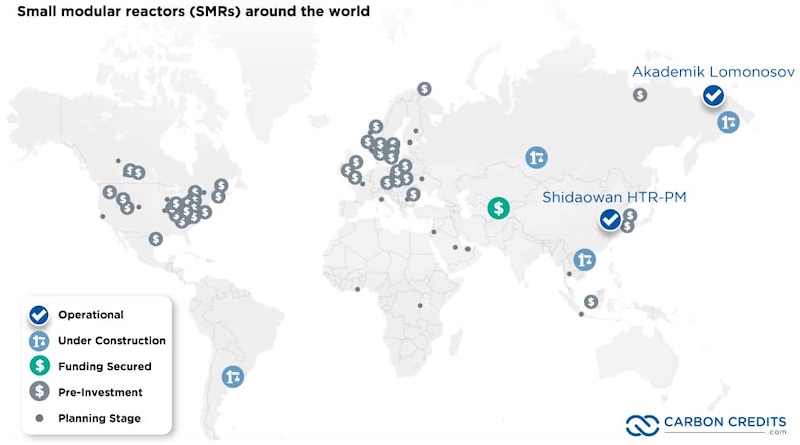Nuclear has been a bit of a dirty word in the clean technology community, and for good reason. Fears of nuclear meltdown, support for clandestine or latent nuclear weapons programs, and many other valid concerns have been discussed, sometimes to death and sometimes to exaggeration. But anyone who lives in the real world knows that society runs on a “safety third” mindset.
Other concerns, like making progress and, more importantly, the almighty dollar, come ahead of these kinds of concerns. But I’ll come back to safety in a minute because it still matters!
Money has been a big problem for nuclear power, especially when it tries to compete with renewables. A nuclear power plant usually takes more than a decade (and often a lot longer) from the time it starts tying up investment until it starts to actually produce electricity without carbon dioxide emissions (at least directly, of course). If the money is instead spent on renewable projects like wind, solar, and battery storage, electricity starts to be produced in months or years instead of decades, leaving nuclear projects behind permanently.
This is a real shame, because nuclear energy does have some great advantages we could sure take advantage of while we transition the world to renewables. Low fuel costs, 24/7 constant generation, minimal impacts on the climate and atmosphere, and the safety of modern reactors all add up to this being a technology we don’t want to skip out on if at all possible.
This is where Small Modular Reactors come in. Unlike large nuclear power plant projects, SMRs are under 300 megawatts of rated power per unit. They’re also designed to be built in a factory instead of being built on site at great expense. Modular parts mean that the technology can improve from one reactor installation to the next and even provide some upgrade paths for existing reactors. The small sizes and modern designs can even reduce or eliminate the risks of nuclear accidents.
Basically, this alternative approach to nuclear means that we get to keep the advantages without having to deal with the financial and safety downsides that traditional nuclear brings to the table. Like renewables, these small reactors can be brought online in months or years instead of decades. Because they aren’t giant commitments, they don’t suck too much financial oxygen out of the room, allowing competitive renewable energy to not only keep being deployed, but end up in symbiotic relationships with the reactors.

Perhaps more importantly, SMRs are actually in the pipeline (unlike, say, promises of nuclear fusion that always seem to be decades away). SMR development is already underway in the United States, Russia, China, Canada, and the UK, and those are just the leading countries. The International Energy Agency estimates that there will be 120 gigawatts of installed SMRs by 2050. The money to finish the development and building of these reactors is also in the pipe and ready to fire, including commitments from government agencies in all of the above countries. So far, $5 billion has been invested, but that number is projected to skyrocket to $670 billion by 2050.
Private investment is also already along for this ride. Major corporations like Google, Amazon, Microsoft, and even Tesla are all finding themselves in great need of additional electrical power for datacenters. Emerging technologies like blockchains, artificial intelligence research and training, and much more are all asking for more and more power, while carbon credits can help reduce the costs of nuclear power further (depending on future regulations).
In other words, we should keep an eye on this technology. SMRs are going to be playing a role in the energy transition. The technology is there. The money is there. The interest is there. The need is definitely there. It’s just a question now of how big of a role the technology and its fuel is going to play.
This article has been sponsored by New Era Publishing.

Sign up for CleanTechnica’s Weekly Substack for Zach and Scott’s in-depth analyses and high level summaries, sign up for our daily newsletter, and follow us on Google News!


Whether you have solar power or not, please complete our latest solar power survey.
Have a tip for CleanTechnica? Want to advertise? Want to suggest a guest for our CleanTech Talk podcast? Contact us here.
Sign up for our daily newsletter for 15 new cleantech stories a day. Or sign up for our weekly one on top stories of the week if daily is too frequent.
CleanTechnica uses affiliate links. See our policy here.
CleanTechnica’s Comment Policy

